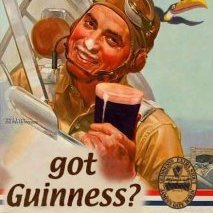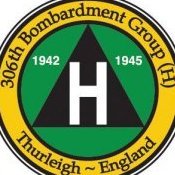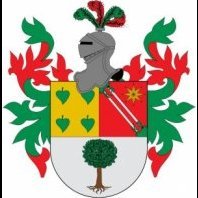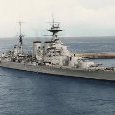-
Posts
1,018,768 -
Joined
-
Last visited
-
Days Won
39
Mike last won the day on July 19
Mike had the most liked content!
About Mike
- Birthday 09/05/1967
Profile Information
-
Gender
Male
-
Location
Chester, UK
-
Interests
Aircraft, AFVs & Sci-Fi
Recent Profile Visitors
128,878 profile views
Mike's Achievements

Constant Member (9/9)
33.9k
Reputation
-
They didn't take your sense of humour It'll be a big help with the recovery. Fingers crossed the fifth time is the charm, as they say.
-
That sounds horrible. I hope the op has the desired effect
-
That's a lovely 110. Hope your op went/goes well (not sure which side of it you are). When you have a moment and feel well enough to give it some thought, I noticed that the pics were loading slowly. I tested some of the pics, and they were 3mb in size, which is pretty large when posting up on the internet, even in today's relatively fast broadband. You should be aiming to save your files to around 2-300kb maximum, give or take a bit. To accomplish this, you can reduce the size of your pics, as anything over the recommended 1024 x 800 or 1280 x 800 maximum we advise is wasted bandwidth and your own storage space usage. Most people view these pics on phones, tablets and 1080p screens, so huge photos of 4,128 x 3,096 px will have to be shrunk down by the forum software, creating unnecessary load on the server and delay for the user, as well as the extra bandwidth that is uses up on the wider internet on its way here (around 10x what's necessary). The downsides of this from a viewer's point of view is the waiting time before you can view the pics, and some people might get bored and click away, especially if they're not lucky enough to have fast broadband for whatever reason. From the server's point of view, it's wasteful of bandwidth, cache storage size, and it's wasteful of the server's processing resources due to the calculations needed to accomplish the shrinking, which means a slightly slower experience for all of us. This isn't meant as a "telling off" BTW, more of a bit of useful advice to help you as well as help us. If you can size your pics to the recommended limits, we'll be really happy, and so will the members
-
to the forum Abel. Hope you enjoy it here
-
It's the same plastic, and yes. You probably should have, but they had to get plenty of US variants out first, as that's a BIG market
-
Thunderbolt Mk.II Royal Air Force Advanced Kit (48012) 1:48 MiniArt via Creative Models Ltd The Thunderbolt developed from a series of less-than-successful earlier designs that saw Seversky aviation changing its name to Republic, and the project designation from P-35, to P-43 and P-44, each with its own jingoistic sounding name. After a realisation that their work so far wasn't going to cut it in the skies over war-torn Europe, they went back to the drawing board and produced the P-47A that was larger, heavier and sported the new Pratt & Whitney R-2800 18-cylinder radial that would also power the B-26 Marauder, P-61 Black Widow and F4U Corsair. For firepower they added eight .50cal Browning machine guns aligned along the axis of flight in the wing leading edge, four per wing. The P-47A was still a small aircraft, and was initially ordered without military equipment to allow faster completion, but it was considered inferior to the competition then available, so an extensive re-design was ordered that resulted in the much larger P-47B, firing up to 100 rounds per second from the eight .50cal wing guns, and with a maximum speed of over 400mph, leaving just the fuel load slightly short of requirements. It first flew mid-1941, and despite being a heavy-weight, its performance was excellent, and the unfortunate crash of the prototype didn’t affect the order for over 700 airframes, which were fitted with a more powerful version of the R-2800 and a sliding canopy that made ingress and egress more streamlined, particularly when bailing out of a doomed aircraft. Minor re-designs to early production airframes resulted in a change to the P-47C, which meant that fewer than 200 Bs were made, the C benefitting from improved radio, oxygen systems, and a metal rudder to prevent flutter that had been affecting control at certain points in the performance envelope. A quick way to spot a B is the forward raked aerial mast behind the cockpit, as this was changed to vertical on the C and beyond. Production from a new factory that had been brought on-stream to keep up with demand led to the use of the D suffix, although they were initially identical to the C, but the cowling flaps were amended later, making it easier to differentiate. Of course, the later bubble-canopy P-47s were far easier to tell apart from earlier marks, and constant improvement in reliability, performance and fuel load was added along the way. The P-47D-25 carried more fuel for extended range, including piping for jettisonable tanks on the bomb racks for even more fuel. Taking a cue from the British designers, the bubble-top was developed and that improved all-round visibility markedly, although like the later mark Spitfires, later models incorporated a fin extension to counter the yaw issues that resulted. Its weight, firepower and seemingly unstoppable character led to the nickname ‘Juggernaut’, which was inevitably shortened to ‘Jug’ and led to many, many off-colour jokes during and after the war. Jokes that are still soldiering on to this day, despite being eligible for a pensioner’s bus pass. The Jug was used extensively in the European theatre as an escort fighter, where it performed well in its ideal high-altitude environment. Later in the war when the Luftwaffe was a spent force, it also went on to become a highly successful ground attack fighter, strafing and bombing targets of opportunity, and eschewing camouflaged paintwork to add some extra speed with a smooth (and shiny) bare metal finish. As well as flying with the US forces, many P-47s were flown by the other Allies, including the British, Russians, and after the war many other countries as the remainder were sold off as war surplus. The Thunderbolt Mk.II was the RAF designation applied to a group of sub-variants from two factories, comprising -25/-30-REs from Farmingdale, and -30/-40-RAs built at Evansville. The Kit This is another reboxing of a brand-new tooling from MiniArt, and is labelled an Advanced Kit because it includes an additional sprue of plastic parts, and a fret of Photo-Etch (PE) brass to increase the level of detail of the kit, including the gun bays, fins for the bombs, and the ability to open the engine cowlings to display the excellent detail that is mostly hidden away on the Basic Kit. The kit arrives in one of MiniArt’s sturdy top-opening boxes with a dramatic painting of the subject on the front, and profiles of the decal options on one side, reserving the other side for practical details and text. Inside the box are twenty-one sprues in grey styrene, although in our sample many of the sprues were handily still connected by their runners, which simplified photography. There is also a clear sprue, a sheet of PE in a cardboard envelope, two sheets of decals, and the instruction booklet, which is printed on glossy paper in colour, with profiles for the decal options on the front and rear pages, plus detailed painting and decaling information for the weapons and tanks on the next page. Detail is beyond excellent, as we’ve come to expect from MiniArt in the last several years, with fine engraved panel lines, recessed rivets, plus raised and recessed features where appropriate, as well as fine detail in the cockpit, wheel bays, plus gun bays in the wings and the engine of course. If you’ve seen their AFV kits you’ll know what to expect, but this is special in this reviewer’s humble opinion. Construction begins with the highly detailed cockpit, starting with a choice of seat style. One option has the seat put together from base, back and two side parts, which have elements of the seatbelts moulded-in, and are finished off by putting the remainder of the lap belts on the seat pan. The other option uses new parts to build the seat without belts, adding the parts from the PE sheet separately. A pair of supports are inserted into recesses in the back of the seat, then it is installed on the ribbed floor, which has control column, seat-adjuster, and two other levers inserted, after which the rear bulkhead, one of the cockpit sidewalls and the front bulkhead are fitted, trapping the rudder bar with moulded-in pedals between them. The starboard sidewall has an oxygen hose added, and a scrap diagram shows the detail painting as well as the location of the decals that need to be applied. A cushion is fixed to the head armour, then the other sidewall is detailed with four controls and a PE wiring loom, numerous decals and more detail painting, so that it can be inserted along with the instrument panel and auxiliary panel, both of which have decals for the dials, with a choice of styles for the main panel. The tail wheel is made up in preparation for closing the fuselage, building a four-part strut that holds the wheel on a one-sided yoke, then adding a small curved bulkhead with sprung bumper at the front, or a more simplified three-part assembly that depicts a canvas cover over the mechanism. The fuselage halves are further prepared by adding two extra detail parts to the short sill panels that have ribbing moulded-in, and should be painted to match the cockpit. At the rear on the underside, the supercharger fairing is slotted into the starboard fuselage along with the tail gear bay, and at the front, a cooling vent and an insert are added to the underside, fitting another vent to the port fuselage half in the same place. The fuselage can then be closed around the cockpit, adding the aerial mast into a slot in the starboard spine, although whether that will remain intact until the end of the building and painting is a moot point, and I’d be tempted to nip it off at the base, gluing the base in to act as a socket for the aerial to be pinned after the heavy work is over. The engine is created by joining the two highly-detailed banks of pistons together by a keyed peg, adding exhaust collectors at the rear, the push-rod assembly to the front, the ends of which mate with a circular support that is the frame onto which the cowling panels are added later. The reduction-housing bell is detailed with magnetos and other parts, plus a collet at the centre where the prop-shaft would be. This is joined to the front of the engine as it is mounted to a bulkhead at the rear, again on a keyed ring. The convex firewall at the front of the fuselage is detailed with a ring of fasteners on a PE strip that curves around the edge, and the cylindrical intakes with PE mesh grilles. There is a fuselage insert in front of the cockpit, and that has the two-part gunsight with clear lens, PE backup sight and link-plate added to its mating point, adding more equipment and a PE lip to the coaming before it is inserted under the coaming and joined by your choice of complex or simple firewall that closes the front of the fuselage, the former applicable if you intend to display the contents of the engine bay later. The intake trunking at the bottom of the nose cowling is made from five parts and installed in the lower panel, and you have a choice of open or closed top cowling panels by using additional parts. To leave the cowling open, the engine is fitted to the detailed firewall along with the lower cowling and the three sections of cooling gills. the closed option is surrounded by all four cowling segments, and at the rear you have a choice of installing open or closed cooling gills, using different parts to achieve the look you want, sliding the assembly over the completed engine, to which you can add the wiring loom if you are feeling adventurous, using the helpful diagrams near the back of the booklet, which also includes diagrams for extra wiring in the gear bays. The rudder is completed by adding an insert at its widest point (the bottom) to avoid sink marks, and it is mated to the fin on three hinges, allowing deflection if you wish. Under the tail, your choice of bare or canvas-covered wheel assembly is inserted in the bay, with doors on each side, or if you are building your model in flight, a closed pair of doors is supplied as a single part, adding a small outlet further forward under the fuselage. Note that the closed bay doors can be used effectively as masks by gluing them in place with a relatively weak adhesive for later removal. The upper wing halves have well-defined ribbing detail for the gear bays moulded-in, which is augmented by fitting two rib sections, front and rear walls, and an additional structure that has a retraction jack pushed through a hole in one of the wall segments. The gun bays and their extensive ammunition stores are supplied in this boxing, using different upper wing panels with the bays opened. The gun bays themselves are built from a mixture of styrene and PE surfaces, making up a four-compartment box into which the gun breeches are inserted, linking them to the outer wall with ammo feed chutes, and placing the ammunition boxes with open tops into the upper wing from within. The closed bay option is shown with just the barrel stubs projecting from the leading edge, while both options install the wingtip lights and a pitot probe in the starboard wing. A scrap diagram of the lower wing shows the location of the flashed-over holes that you can drill out for rocket tubes or pylons, then the flaps are made from two sides, plus a pair of hinges, and these are glued into the trailing edge of the wing with the ailerons, then the lower wing can be glued to the upper, along with two inserts at the tip and to the rear of the gear bay, which includes a flush landing light. Three PE edging strips are inserted over the open gun bays, adding a PE indicator and PE prop to hold the styrene panels at the correct angle, the gun bay hinging forward, the ammo bay hinging aft. The same process is then carried out in mirror-image for the other wing, omitting the pitot probe and landing light, after which the wheels and their struts are made up, each wheel made from two halves plus a choice of three hub types, and two styles of tyres are also provided, one without a flat-spot, the other under load on the ground, leaving it to your taste. The struts are detailed with separate compressed or relaxed oleo scissor-links plus stencil decals, and they are mated with their wheels, plus the captive gear bay doors, the lower portion of the door made from two layers, again to avoid sink-marks. The wings are glued to the fuselage with an offset joint making for a stronger bond, and the elevator panels are each slotted into the tail, and have separate flying surfaces that can be posed deflected, each one a single part. If you are building your model with the gear down, the inner gear bay doors are fitted to the fuselage, which contains the inner edge of the main gear bays, so remember to paint that while you are doing the bays. If you plan on making an in-flight model, there are two single parts that depict the closed main bays, or you can insert the two struts with their wheels for the grounded aircraft. The four centreline supports are fitted between the main bays for some decal options, then the model can be flipped over to stand on its own wheels so that the canopy can be installed, gluing the windscreen at the front, and deciding whether to pose the blown canopy open or closed. The prop is also fitted, and this is made up from two parts glued perpendicular to each other, each holding two blades in opposition, and the spinner with PE washer is glued into the front section, using alternative parts with a moulded-in spinner for one decal option. The Jug could carry quite a load, whether it was extra fuel or bombs, and all these are included in the box, starting with the two-part pylons, which can be depicted as empty by inserting a cover over the business end. You have a choice of four styles of tank, a 108gal compressed paper tank with a ribbed nose and tail, a 200gal wide and flat tank, the third 150gal streamlined tank with flat mating surface, and the last one slightly smaller at 75gal. All but the third option has a pair of sway-braces between them and the pylon, which fit into slots in the pylons. They are built in pairs to fit under the wings, but the first two options can also be used solo on the centreline support. The bombs use the same pylons, and can be built in 1,000lb, 500lb or 250lb variants, each one made from two halves for the body and two parts for the square tails or thinner PE fins if you prefer, and mated to the pylon by a pair of sway-braces that varies depending on size. There is also a smoke generator that looks like a drop-tank with a spout on the rear, which would be used to lay smoke for the Allied troops below to cover their actions, at least temporarily. Markings There are three decal options on the main sheet, covering two main schemes, all of which were stationed overseas. From the box you can build one of the following: 30th Sqn., RAF South East Asia Command, India, Jumchar, Autumn 1944 No.73 OTU, RAF Egypt, Spring 1945 79th Sqn., RAF South East Asia Command, India, Wangjing, Spring 1945 Decals are by Cartograf, which is a guarantee of good registration, sharpness and colour density, with a thin matt carrier film cut close to the printed areas. Conclusion MiniArt aren’t the only choice in this scale for a Thunderbolt, but I have a feeling that this kit is rapidly becoming the de facto standard, as their selection of variants and detail level widens with each release. The detail is exceptional and even better than the alleged ‘Basic Kit’ that preceded it. VERY highly recommended. Review sample courtesy of
-
T-72M1 Soviet Main Battle Tank (03357) 1:72 Carrera Revell The T-72 is the one of the most ubiquitous Main Battle Tanks in the post-war world, although it shows its age when pitted against more modern designs that have appeared in the last few decades. Since its entry into service in the early 1970s, over 20,000 examples have been manufactured, making it second only to the T-54/T-55 family in terms of units produced. Exported widely, scarcely a year has gone by when the T-72 hasn't been in action in a hotspot somewhere around the globe, which is no mean feat for a tank that was conceived as a hedge against the more ambitious project that was the complex T-64. The T-72 shares the basic design principles that are common to all post war tanks produced by the Soviet Union/Russian Federation, being compact, light and with a low profile, the T-72 has a version of the 125mm smoothbore gun found in other Eastern Bloc tanks with two-part ammunition and an auto-load system that removes the need for a fourth crew member, cutting down on space requirements inside the crew compartment, but taking up a large portion of the centre of the hull with its carousel. The first models featured a conventional cast armour turret that was improved and thickened for the T-72A, which featured cavities filled with quartz or sand and was named 'Dolly Parton' armour by NATO forces for reasons we shan’t dwell upon. Later models featured laminated armour and added Explosive Reactive Armour (ERA), both of which proved to be extremely effective against contemporary anti-tank rounds and other shaped-charge warheads. The M1 variant was an export version that was sold to Soviet Bloc members and aligned nations, with a specification broadly equivalent to that of the T-72A, and benefitting from thicker armour. The Kit This is a reboxing of a 2006 tooling of this variant of an important Soviet Main Battle Tank. It arrives in a black end-opening Revell themed box, and inside are five sprues of grey styrene, a small decal sheet, and an instruction booklet that is printed in colour on matt paper. Detail is good, and nothing seems to have affected the moulds since the last time they were used, which includes the link-and-length tracks, exterior detail and the road wheels. Construction begins with the lower hull, which has the two sides glued in place, incorporating the swing-arms and axles for the entire vehicle. Twelve pairs of road wheels are made up from individual parts, making up two idlers from two parts each, and two drive sprockets from three parts. A trio of return-rollers are inserted into their mounts on the sides of the hull, followed by the rest of the running gear, gluing them into place, then assembling the tracks. Two long track lengths are used for the upper and lower runs, adding shorter diagonals at the ends, and individual links around the idlers and drive sprockets, plus one link at either end of the lower run to soften the joint between it and the diagonal track sections. An appliqué panel is fixed to the diagonal rear of the hull on a pair of pegs with corresponding holes in the hull. The upper hull is moulded as a full-length part, adding a glacis insert with towing hooks at the front, and a set of vents at the rear, gluing the upper and lower hull parts together, ensuring the drive-sprockets face the rear. Two fuel drums are made from halves plus end-caps, and are installed at the rear on four curved brackets, mounting a couple of spare track links below them, and an unditching beam with a pair of towing hooks. Headlights with cages are fitted near the front of the glacis, along with a towing cable and a V-shaped bow deflector in front of the driver’s central hatch. Side skirts with moulded-in flexible lower sections are fitted to the fenders, adding a two-part exhaust curving down over the left side of the deck, then making the aft towing cable from three parts for installation around the rear of the engine deck, with a folded tarpaulin on the opposite side to the exhaust. The turret is roughly circular and is made from top and bottom halves, inserting the gun tube plus hollow muzzle, and two-part blast-bag into the slot in the front, and fitting the commander’s cupola with optional open rear-portion of the hatch, plus the gunner’s hatch that can also be posed open or closed. A searchlight with separate lens is mounted on the front of the cupola, a deep-wading snorkel on the left side, two multi-part stowage boxes on stand-off brackets, and several lifting hooks. The next step is building the DShK anti-aircraft machine gun from a breech with moulded-in barrel, ammo box, elevation mechanism, and what appears to be a rear-view mirror that can be fitted in two positions. It is glued to the rear of the commander’s cupola, fitting seven smoke discharger tubes on the left and four on the right of the gun’s mantlet, which slide into slots moulded into the turret armour. A searchlight is put together from two parts, plus a yoke, adding a linkage to the barrel that focuses the beam where the gun is aimed. Another small light or what appears to be a roll of comms wire are optionally mounted on the left side of the turret, locking it to the hull on the two bayonet lugs moulded into the ring. Markings There are three decal options included on the small sheet in various schemes of different operators, and from the box you can build one of the following: Nationale Volksarmee, 9. Panzerdivision, DDR, Eggesin, East Germany, 1990 Polish Army, 16th Mechanised Infantry Division, Elblang, NATO Exercise ‘Anakonda’, 2010 First batch of Ex-Polish T-72M1s, donated to Ukraine Army, Krywyj Rih, May 2022 The decals are printed in Italy with good registration, sharpness and colour density, plus a thin matt carrier film cut close to the printed areas. Conclusion It has been a while since this variant last hit the shelves, and with good detail for the scale, some interesting decal options and Carrera Revell’s distribution network, it should sell well. Highly recommended. Carrera Revell model kits are available from all good toy and model retailers. For further information visit or
-
Did the dataset have some extra Salvador Dali thrown in there for good measure?
-
Kfz.70 with MG34 (35502) 1:35 ICM via H G Hannants Ltd The Horch 108 was developed and then built by Horch as well as Ford Germany as a heavy off-road transport for troops, light transport, searchlight and anti-aircraft installations. The passenger variant was known as the Kfz.70, but with the addition of the anti-aircraft mount in the passenger compartment, it was sometimes known as the Kfz.81. They were widely used by the Wehrmacht in various roles throughout their spheres of operation, and this model was employed as a mobile self-defence installation that was capable of rotating 360° and was effective out to 2,000 metres, with a high rate of fire that often led to them being employed as fire support when they were advantageously placed. Eventually the Horch was withdrawn in favour of the more flexible kubelwagen. The Kit This is a relatively new tooling from ICM, dating from 2015, but adding a machine-gun mount in the rear to improve the overall value and give it a more aggressive countenance. The additional instructions for the machine-gun mount are given on the last two page of the booklet, once the vehicle itself is completed. The kit arrives in a top-opening box with a captive inner flap on the bottom tray, and inside are seven sprues in grey styrene, plus a clear sprue, a sprue of flexible black tyres, a small decal sheet and the afore-mentioned instruction booklet. The model is built up on its ladder chassis, including the engine, transmission, suspension with nicely moulded springs, plus body supports, brake hoses and exhaust system. Overall it's a very nicely detailed underside, with the engine being the focal-point. The hubs are split between inner and outer halves, which facilitates easy painting of the wheels and tyres separately, and installation of the tyres on the hubs without struggle. The coachwork is assembled on the floor plate after drilling out a hole for the gun mount. It has the rear wheel arches moulded in and stops at the firewall, with spaces for the driver's pedals in the left footwell. The body sides are added, with moulded-in framework, and the dashboard is fitted between them to stabilise the assembly. The dash has a decal for the instruments, a handgrip for the co-driver, heater ducting and a lever beneath the steering column, which is added later. The front inner arches are glued to the underside of the body, and a rear load cover with moulded-in seat back is applied over the rear arches, after which the two rear doors and their handles are installed. A delicate (in this scale) framework is fitted between the rear seats and the driver's area, with the fifth wheel behind the driver, and a set of bench seats in the back of the rear compartment, which also have delicate framework under their cushions. The front seats are individual, but of similar construction, and have space for the supplied KAR98 rifles between them, with two more pairs fitted in the rear compartment. The windscreen is of the flip-down type, and has two separate panes added to the frame, with no windows supplied for the sides, as it is modelled with the hood down. The doors can be fitted opened or closed, with their own separate handles inside and out. Once the chassis and body are mated, more of the underpinnings are added, and the radiator with cooling fan are attached along with the louvred bonnet and front bumper irons. At the rear the hood is constructed from four parts, sitting on top of the load cover in a folded state, as there isn't an option for a raised hood on this variant. Wing mirrors, pioneer tools, front headlights with clear lenses, and number plates are dotted around to finish off the main build. To make up the gun installation, the MG34 has the breech-cover fixed in place, adding a drum magazine and a bipod before trapping the assembly between the two halves of the support, which has lightening holes moulded-in that you could drill out if you’re so minded, and while you’re drilling things, the muzzle of the gun is moulded solid. To finish, the gun on its support is glued into a hole in the floor of the crew compartment. Markings There are two markings options on the decal sheet in Panzer grey or Dunkelgelb schemes. From the box you can build one of the following: Eastern Front, 1942 1943 onwards Decals are by ICM’s usual partners, which is a guarantee of good registration, sharpness and colour density, with a thin gloss carrier film cut close to the printed areas. Conclusion A well-detailed model of a relatively common vehicle in Wehrmacht service, with added MG34 in the rear that the crew can use for self-defence. Highly recommended. Available in the UK from importers H G Hannants Ltd. Review sample courtesy of
-
Hawker P.1127 (A01033V) 1:72 Airfix Vintage Classics Following experiences of WWII and the Korea war, it occurred to British and American military procurement that a fighter and ground-attack aircraft capable of operating from unmade short fields would be a useful tool to avoid the inconvenience that a heavily cratered runway could cause. Hawker took this onboard, and it was decided to use the Bristol Pegasus vectored thrust engine that was in development at the time to create an airframe that could take-off and land vertically, rendering long airfields optional. Well-known engineers Stanley Hooker and Sidney Camm were key to the creation and integration of the new type of engine into an airframe, using ‘cold’ nozzles at the front, and hot nozzles at the rear, although from a human perspective they were both extremely hot, but the rear nozzles were significantly hotter. The key take-away is not to stand in front of either nozzle when the engine is running. The nozzles didn’t provide enough fine-control to the pilot, so puffer-jets were added, routing air from the engine to the wingtips and nozzles under the nose and tail, giving the new aircraft the stability it required to hover without killing all involved in a ball of flame and tangled debris. There is conjecture about who pushed the project along, but with the parlous state of British aviation thanks to devastating post-war cut-backs, and the infamous Sandys report, funding was harder to acquire than it might otherwise have been. The NATO requirement that had originally been one of the Hawker goals was also revised, and it looked unlikely that the P.1127 would fulfil its needs, even in its finished production state. America expressed interest during development, and several airframes were transferred to them for evaluation, which were positively received, although concerns were expressed about the longevity of the inflatable intake lips, which resulted in their replacement with more traditional blow-in doors. More powerful variants of the Pegasus engine were also fitted, although NATO was also interested in a supersonic option, which was ultimately cancelled as part of the range of cut-backs in the early 60s. Aircraft Carrier trials were also undertaken, proving that the short/vertical take-off and landing STOVL capability was a great benefit to carrier operations, eventually leading to ruggedised Sea Harriers some years later. In the UK, the aircraft was initially called the Kestrel as it neared the end of initial development, whilst in US circles it became the AV-6A, and by 1967 initial production airframes were delivered to the RAF, where it was given the name Harrier due to its differences from the earlier prototypes, going into service as the Harrier GR.1 at the start of a glittering career. The Kit This kit was tooled in 1963 when the Harrier was just a bird, and not the coolest air show performer ever, or a useful aircraft in the RAF, FAA, USMC and other nations’ Air Forces, some of whom are still flying their later variants. It represents the development airframe, and is a product of its time that is wearing pretty well given its age, certainly better than this reviewer, who is somewhat younger. It has been re-released in Airfix’s Vintage Classic range, and is deserving of the moniker because it’s a vintage kit of a classic airframe in its early days whilst still under development. The kit arrives in a small end-opening box with the original artwork on the front, and profiles for the decal option on the rear. Inside the box are five sprues without exterior runners in grey styrene, plus a clear sprue, decal sheet and short instruction booklet. The model is covered in fine raised rivets and panel lines, and was tooled when moulds were cut from master pattern s. The moulds have worn very well, given that they’re 60+ years old, and interior detail is minimal, consisting of a pilot on an ejection seat that fills the narrow cockpit, and would have been well-received at the time when a full pilot was rare. There are nozzles with louvred exhausts, a depiction of the front face of the engine, and although the gear bays are blank, the rear bay is covered entirely, while the nose bay has a pair of doors, and there is a choice of retracted or deployed gear, which also extends to the outriggers that were at the wingtips at this point in the aircraft’s development. Construction begins with the fuselage, which in vintage style includes the pilot, seat, two blank sidewalls in the cockpit, plus a bulkhead with a fan face moulded-in, and four separate pegs that hold the exhausts in place, gluing them carefully if you wish for them to remain mobile. Some detail painting for the cockpit and pilot are called out in Humbrol codes, and the nozzles are shown painted at this stage too. The wings are each built from top and bottom halves, with tabs on both ends, the larger tabs slotting into the wing roots, fitting the elevators in a similar manner, remembering that there is a noticeable anhedral (downward slope) to all the flying surfaces. A choice of two styles of tail fairing is provided, one with a flat tip, the other tapered, with a similar choice at the nose, fitting either a pointed cone with long probe, or a rounded cone. The model is inverted to finish, fitting the nose gear with moulded-in wheel and two separate bay doors, the main strut with separate twin wheels and a single bay door, followed by the deployed outrigger wheels that are moulded into the wingtips that slide onto the smaller tabs. To depict the model with gear up, the bay doors are fitted flush, with a little bit of fettling more than likely to be required. Alternate wingtip parts are included that portray the outriggers configured for flight. Markings There are two very similar decal options on the sheet, as this was one of two development airframes. From the box you can build the following: Decals are by Cartograf, which is a guarantee of good registration, sharpness and colour density, with a thin gloss carrier film cut close to the printed areas. Conclusion A true classic kit that’s available again in Airfix’s new darker grey styrene, with Cartograf decals for about the cost of a pint of quality ale, plus the bonus that you can feel like a spring chicken, or an old giffer, depending on your comparative age. Highly recommended. Review sample courtesy of
-

ICM Model A Standard Phaeton Soft Top 1930s (24050) 1:24
Mike replied to Mike's topic in Vehicle Reviews
As I'm only able to 'react' with one sticker, I'll put the thanks in here -
In other news, water is wet, politicians are corrupt, and it goes dark every night providing you're not too far north or south. Printer cartridges have always been a rip-off, and make booze and even fuel appear cheap, despite the manufacturers trying to con us into thinking they've changed their ways (they haven't). I switched to B&W laser printers some years ago, when you could get a printer with a half-full cartridge for around £50. They're more expensive now, like everything else, but they're still better value, and as we're all (are we?) less likely to print things now, they're much more cost effective. If we ever want to print off pictures, there are tons of online printers that'll do the job for you. It'll take a few days to arrive, but it's pretty convenient. Until I owned one, I'd never rated or even considered Lexmark as a printer manufacturer, but now I think they're great. Reasonably priced, and unlike Samsung rubbish, they keep on working for longer than the guarantee period. I had to bin off my last Samsung printer after it decided it wasn't a network printer any more when I changed my internet provider and got a new router. My feelings about Samsung in general are barely suitable for this forum after much disappointment of their more recent output.
-
That’s probably not as close as it appeared, but I bet it made the pilot sit up and take notice. It’s a good job pilots are a little more restrained in their revenge urges than your average car driver though, as we could all be mingling in radioactive clouds by now
-

Post got 500 error then didn't update
Mike replied to marvinneko's topic in Help & Support for Forum Issues
I think I know what you’re on about. Has the forum not moved your post up the listing commensurate with the time of your last post? If so, it’s a quirk of the 500 error (which we’ll hopefully leave behind sometime this year), and all you need to do to ‘fix’ it is edit the post. Add a few words to the bottom of it, save it, and as long as you’re not double-unlucky, it should then update. You can go back and remove the extra words if you like then. Shouldn’t affect its placement in the listing -
de Havilland Chipmunk T.10/T.20 (A04105A) 1:48 Airfix The Chipmunk was the first fully Canadian aircraft from De Havilland of Canada that entered service just after WWII, and was used by many air forces as a trainer in the post WWII years, often replacing the biplane Tiger Moth. The RAF trainers were manufactured by D.H. in the UK, serving with the RAF until 1996 when the last of them were withdrawn from service, and there are a lot of pilots that learned to fly during that period who hold the little aircraft in high regard, having taken their first tentative and hopeful steps into the sky at the controls of a Chippie. Its calm and reliable flight manners made it an ideal trainer, and its more modern construction using a large proportion of metal parts with only partial fabric covering to the wings, gave it a more modern feel that was suitable for the absolute beginner, or ‘ab initio’ pilot, as they are sometimes referred to. Canada continued to use the Chipmunk as trainer until the early 70s, and a surprisingly large list of operators have used them over the years, including such varied powers as Egypt, Ghana and Lebanon. It is estimated that around 500 are still airworthy today, most in private hands. The Kit The Chipmunk is a 2021 tool by Airfix that has been reboxed with new decal options depicting other operators. It arrives in a small top-opening box in Airfix’s usual red theme, with three sprues in dark grey styrene, a clear sprue, decal sheet and instruction booklet with colour profiles on the rear pages. The Chippie’s exterior is covered either with flush panels, raised-rivet panels or doped fabric over the metal ribbing of the structure, and all of these surfaces are depicted well here, even down to the raised rivets, which are thankfully positioned on the leading edges of the wings where they should survive seam sanding. Construction begins with the cockpit, with two bucket seats that have a diagonal surround with the seat itself recessed in a concave shape behind it. The front seat’s recess is a separate part that is glued in behind the panel, with a moulded-in coaming behind the seat, and optional seat cushions for a restored example. The rear seat is a single part that also has an optional cushion. The cockpit floor forms a shallow trough with ribbing in the bottom, and it requires two holes per pilot to be drilled through for an instrument on the floor and the control column, then the seats are both placed behind the controls, slotting into place on twin tabs. The cockpit is set to the side while the interior of the fuselage is prepared, mostly by painting the ribbed sides, adding a few small holes for the tail strakes if necessary, and a pair of stencil decals on the cockpit sidewalls to finish off. The cockpit can then be installed in the port side, and a pair of additional controls are fixed to the exposed side of the cockpit. With the addition of a small circular bulkhead under the tail, the fuselage can be closed and glued along with a bulkhead and tank at the front of the cockpit aperture, which also has some ancillary detail picked out in different colours. This model includes a rendition of the DHC Gypsy Major 4-cylinder engine that has about the same output as an average modern car. The first act is to put the remainder of the cowling in front of the nose on the fuselage, which has the long central section of the engine cowling projecting forward, with optional hinges glued underneath if you plan on opening the cowlings up to show off the engine. The cowling has a coaming and instrument panel for the front cockpit, which has a decal applied for the instruments, as does the rear panel, which also has a separate coaming and decal to finish it off. The engine is built up from two halves that trap a rotating axle between them, with input and output manifolds, the latter angling away from the bottom of the motor toward the underside of the cowling. A C-shaped panel covers the port side of the engine to finish it off, and the two engine mounts are fixed next after removing two moulding-assisting sprue sections from the rear, which you are shown exactly how to remove with the aid of scrap diagrams. The completed assembly is offered up to the bulkhead and locates on four holes that mate with the rear of the engine mounts, just like the real thing. The fixed lower and forward cowlings are glued in place, then you have the option of posing the side cowlings open or closed, which also have a small intake added to the top of the starboard piece. The lower wing is full span, and is strengthened by adding a short spar into the area between the main wheel sockets, with a small landing light inserted from within, just right of centre. The lower wing is then slotted into the gap in the lower fuselage leading edge first, locking two tabs in position within the root fairings and dropping the trailing edge into its matching socket. The upper wings have tabs on the root edge, and these should be glued in place to set up before you add the two separate ailerons, which also have tabs to locate them. Similarly, the lower elevator fins are full width with the root fairing moulded-in, and accepts the two top surfaces, locating with those new donut-shaped sockets that Airfix sometimes use. This slots into the front fairing on the fuselage under the fin, and is then joined by the rudder. The elevator strakes are slotted into their pre-drilled holes, and the elevator flying surfaces are attached to the trailing edge of the fins to complete that area. The Chipmunk’s fixed landing gear is simple, and has aerodynamic fairings moulded-in, with a slot for a clear landing light in the top of the port leg, and there are also a pair of unweighted legs with elongated oleo-scissors to posing your model in flight. The main wheels are each a single part, as is the tail wheel with its strut, which fixes to the small bulkhead at the rear of the fuselage. The prop is a simple two-blade affair, moulded as a single part with a spinner and back-plate to close it in, with a hole in the rear to fit onto the axle projecting from the engine. A pitot-probe and two aileron actuators are glued to the underside of the wings, finisheing off the airframe by installing the open cowlings if you have chosen those. The canopy is an inventive assembly, beginning with the installation of the windscreen with a t-shaped central rod glued to the inside, then a jig is used to attach the two side panels at the correct angles to the vertical so that they can be mated with the roof, rear panels, and a stiffening cross-brace at the rear. You are told in no uncertain terms not to glue the parts to the jig, but someone’s just bound to, so make sure it isn’t you. Before you glue the canopy in position, you have a choice of utilising the two identical pilot figures, which are a well-moulded, but with the usual hands-on-laps pose that I really wish we could move away from. Once that decision is made, your last choice is to pose the canopy open or closed, either of which options requires the addition of the small handles on the port side of the roof, sliding back if you wish to pose it open. Markings There are three options on the kit decal sheet with a choice of three operators from three nations, the Irish option a restored airframe with comfy cushions for the crew. From the box you can build one of the following: Chipmunk T.20 Irish Air Corps, Irish Historic Flight Chipmunk T.20 Portugese Air Force, Escola Militar Aeronáutica, Granja do Marquês, 1951 Chipmunk T.10 HRH Prince Charles’ Chipmunk, The Queen’s Flight, 1968 Decals are by Cartograf, which is a guarantee of good registration, sharpness and colour density, with a thin gloss carrier film cut close to the printed areas. Conclusion A happy re-release of a good kit from Airfix, with different operators, loads of surface detail such as the rivets, the little V-shaped zip-up inspection pockets under the wing and the fuel gauges on the wing tops. Very highly recommended. Review sample courtesy of






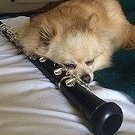
_5.56mm_Rifle_MOD_45162138.thumb.jpg.053e4f85b299efc3857bfa5c1911dc3c.jpg)
